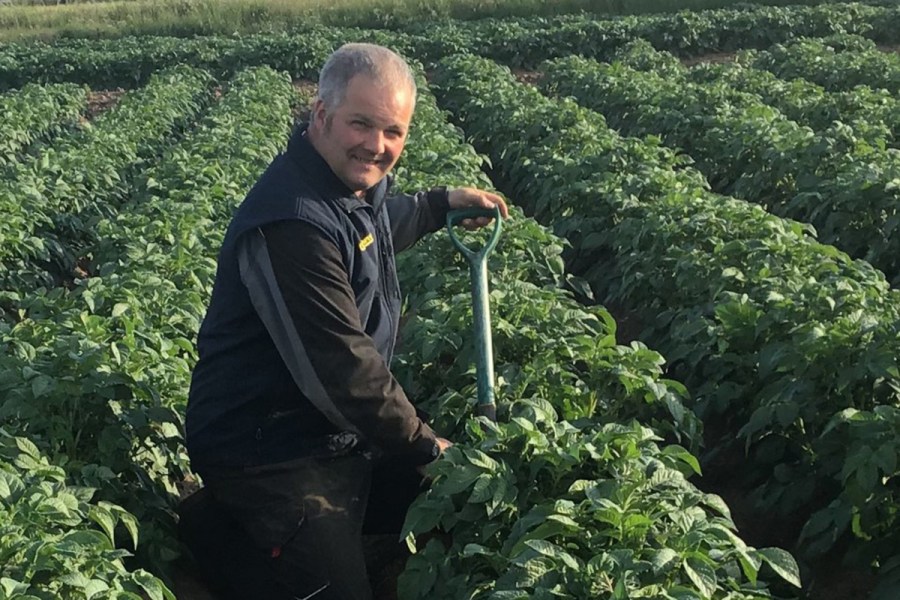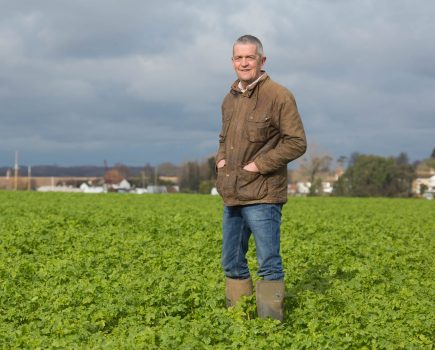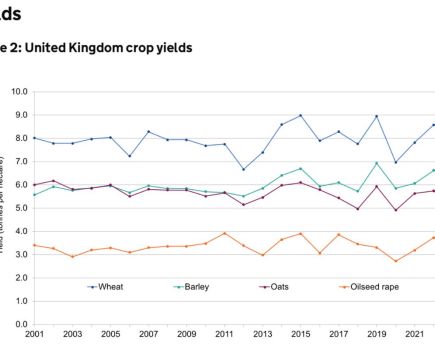By Andrew Wilson
Firstly a few positives – for one, our late-drilled spring cereals were just about worth sowing; not anything like as good as the earlier planted crops, but I didn’t expect they would be. However, the rent is to pay and I don’t like to see bare fields.
Grain N in Laureate barley was 1.42% which was as much a low record as last year’s 2.07 high, meaning it made the grade to fill the spec I sold it forward at, for a price comfortably above the current market.
Yield varied from a poor 3.3t/ha to a better 5.1t/ha, mostly dictated by soil type and drilling date. Spring oats varied from 4.6t/ha to 6.3t/ha with a better than expected hl weight, so again met the spec and were sold forward at decent money for milling. The straw from both crops is a welcome bolster for our pigs this winter.
Invariably, things haven’t all gone well. The spring beans are still to harvest as I write this on 30 September and the rain continues to pour down. Wheat yields look better if I work them out on the harvested rather than sown area, varying from a poor 4.7t/ha on heavy wet land to a more acceptable 8.7t/ha on light land after potatoes. Not a disaster as an average for this year, but pretty poor all the same.
Our autumn cereals are just about all sown via a variety of methods. Wheat on the 6.5ha of fallowed land has been direct drilled into an oat and bean cover crop that was strip-till established, whereas wheat after oats and second wheat has been strip-tilled after an initial light cultivation, and all rolled down before the rain. Most of the winter barley land was ploughed, pressed and drilled in a more conventional fashion, mostly to control sterile brome and volunteer wheat.
At this point we’re yet to harvest any potatoes, but most are now flailed and sprayed with carfentrazone, or will be in the next week. We’ve held off a good week longer than we might have done to squeeze every last kilo of yield from what are lacklustre crops in the main.
Some dry matters have been very high with evidence of internal defects from stress – the recent rain seems to have improved matters in this regard at least, and will now give crops a gentler ride over the harvester.
Potato varieties have surprised me this time – indeterminate varieties have died off early whereas determinate ones have surprisingly held on for a usual length of time. Tubers are down in number but up in size for most crops, and at this point I estimate yield to average around 20% below contract levels – the worst will be a lot worse than that from my digs.
It remains to be seen whether sprout control in store will be an issue following a hot summer and less than ideal conditions for applying maleic hydrazide – crops are going to take some watching in store this winter.
Potato stores are always easier to manage when they’re full rather than part filled – be that managing sprout control, cold pockets of air, hot spots, energy efficiency or condensation. Our youngest store is now 32-years-old and the oldest 44-years-old, but it’s a long time since potato profitability alone was sufficiently prolific to justify building a new one. I’m not sure at age 47 that I have enough years ahead of me to justify building one even if the numbers looked a bit better.
Potato growers are a resilient bunch, but 2024 has once again proved to be a mettle tester – I feel that change is coming but it has to get a wriggle on. Our product is vastly undervalued by our markets and the risks of growing potatoes are way higher than even potential rewards if everything goes right.
Jam tomorrow doesn’t pay the bills of today. We have to make enough money on a regular basis to reinvest or backward is the inevitable trajectory. At one time, small growers were absorbed by larger operators, but increasingly scale isn’t any guarantee of a fruitful future, in fact, the opposite can be the case.
I halved my potato area seven years ago with no regrets and we were by no means a large operator back then. I love being a part of the potato industry but eternal optimism is no longer sufficient to tolerate ever increasing costs, weather volatility, reducing tools, financial, physical and mental pressure, let alone ever greater data harvesting for ever less value.
In some respects I must sound like a broken record – it’s not that long ago I mooted the possibility of NoSpudSlingsby. The market responded with what was at the time a meaningful price increase, but it hasn’t kept pace. We don’t want flowery details and lots of hoop jumping; we want a realistic price which allows us to make a decent return. It’s really no more complicated than that.
Here’s hoping that Mother Nature has had her fun and lets us get our crops harvested before winter properly sets in.
This article was taken from the latest issue of CPM. For more articles like this, subscribe here.
Sign up for Crop Production Magazine’s FREE e-newsletter here.




